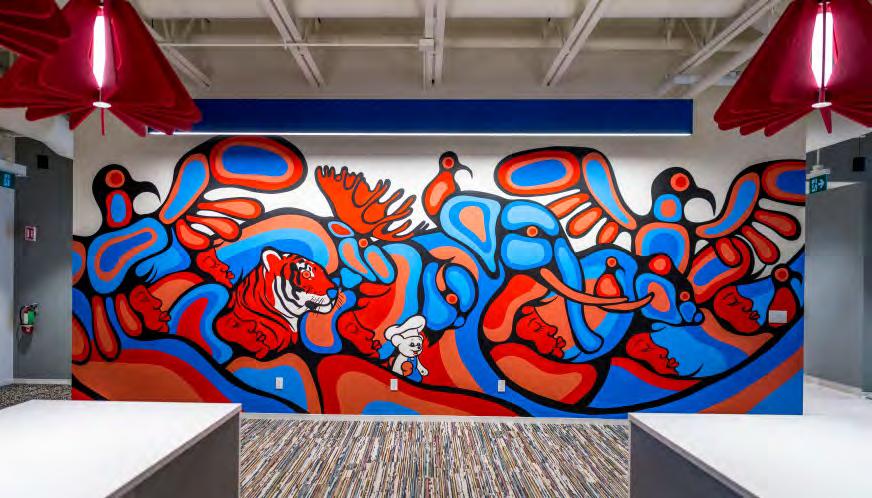
1 minute read
HowCanadianscanhelpbuildreconciliation
(NC) The discovery of mass and unmarked graves of children at former residential school sites across Canada during the last two years have highlightedtheimportanceofeducationandraisingawarenessofthetrue historyofresidentialschoolsinCanada.
Awareness and education are just one step on the path to reconciliation. Organizations can play an important role in communities, build cultural understanding and inspire people to act and to move reconciliation forward between Indigenous and non-Indigenous peoples. Herearefourwayswecancontinuetheconversation.
Advertisement
WalkforWenjack
At the age of 12, Chanie Wenjack ran away from the residential school he’d been sent to three years earlier in Kenora, Ontario, hoping to reunite with his family in Ogoki Post, 600 kilometres away.Aweek after he fled to escape the abuse and brutality of the school, his body was found alongside a railway track. He had died fromstarvationandexposure.
The Gord Downie & Chanie Wenjack Fund (DWF) was formed to “build cultural understanding and create a path toward reconciliation between Indigenous and non-Indigenous peoples.” WalkforWenjackeventstakeplaceduringSecretPathWeek,held every year in October to remember Chanie and the more than 150,000Indigenouschildrenwhoweresenttoresidentialschool.
LegacySpaces
Funded by the DWF, legacy spaces are safe, welcoming places intended to inspire action by providing education on Indigenous history, furthering the journey towards reconciliation. The program helps corporations, governments and educational institutions play an important role in reconciliation in their communities.

BimboCanada,thecountry’soldestandlargestbakery,has openedfourlegacyspaces:atitsheadofficeinEtobicoke,Ontario, its bakery in Winnipeg, Manitoba and its bakeries in Montreal, QuebecandMoncton,NewBrunswick.

OrangeShirtDay
Every year on September 30, Canadians across the country wear orangeshirtstohonourtheIndigenouschildrenwhoweresentaway to residential schools in Canada and to encourage people to learn moreaboutthehistoryofthoseschools.

The orange shirt was chosen specifically in recognition of Phyllis (Jack)Webstad’s experience as a residential school student inthe1970s.Asasix-year-old,shearrivedforthefirstdayofschool wearingashinyorangeshirtthathergrandmotherhadboughtherfor theoccasion.Schoolstafftooktheshirtfromher,andsheneversaw it again. Wearing an orange shirt recognizes the treatment she and otherswentthrough.September30isalsoCanada’sNationalDayforTruth andReconciliation.
Learnoursharedhistory
Reconciliation is an ongoing process. There are a number of organizationsandonlineresourceswhereyoucanlearnaboutthehistoryof residential schools and hear first-hand accounts from people who lived through them. People can also learn the land history in their area and considerlandacknowledgementsatimportantevents.
Youcanfindoutmoreaboutlegacyspacesatbimbocanada.comand downiewenjack.ca







